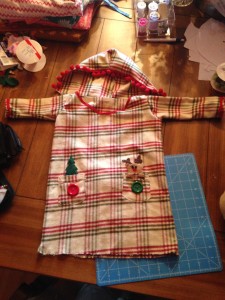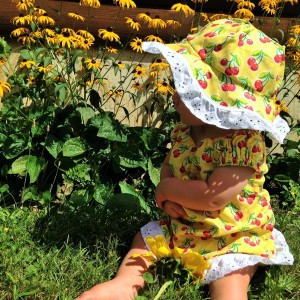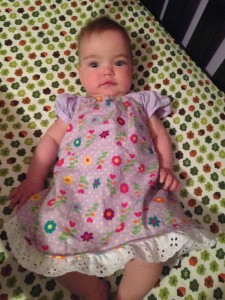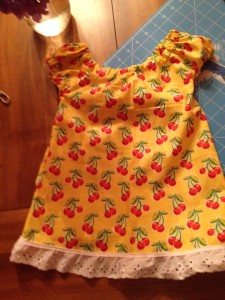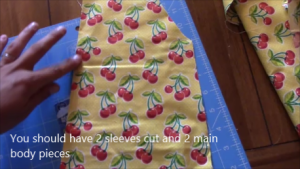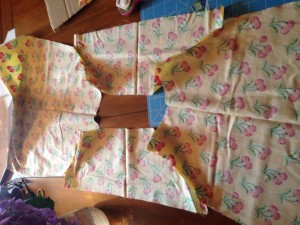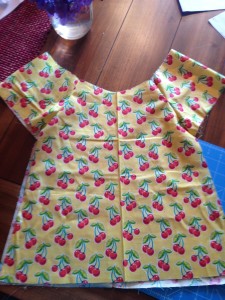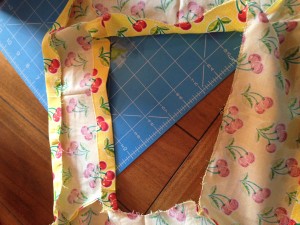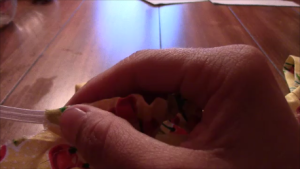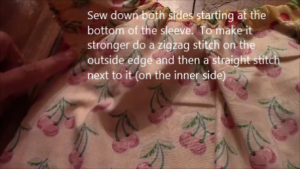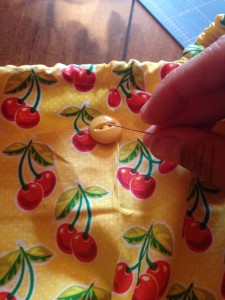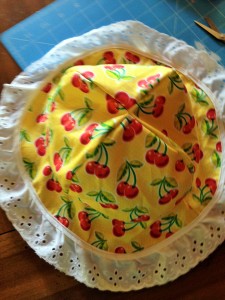So I didn’t want the same old fancy dresses for Christmas that take FOREVER to make and are uncomfortable. Therefore, I strolled around the fabric store looking for inspiration. A tan plaid red and green pattern caught my eye. For some time I have wanted to make a plaid dress for my little one, but haven’t found the right fit. However, today, I thought to myself, “How about a comfy hooded dress in plaid?” And so, the Christmas Plaid dress was born!!!
I designed the dress myself, so be patient with the video since sometimes I change my mind after completing part of the dress. Oh, you’ll see what I mean when you watch it! As always, there is a youtube video tutorial and a written and picture form. The dress pattern is listed below and is a sketch I made of it. There are several sizes on there, but you can always adjust it by measuring your little one or making it bigger or smaller by moving the lines.
What you will need:
- The pattern found here–> dress.jpg
- Fabric (around 1 yard)
- Thread
- Sewing machine and scissors
- Optional: ribbon, bias tape, buttons, felt, any other decorations, Velcro for hood
Lets get started!
- Print the pattern and cut out the right size (note: make sure it is the right size for your little one by measuring)
- Cut your fabric patterns out as instructed (decide if you want a hood and if you want it detachable. Also decide if you want long sleeves or no sleeves)
- You can serge or zigzag stitch around all the pieces of fabric to prevent fraying.
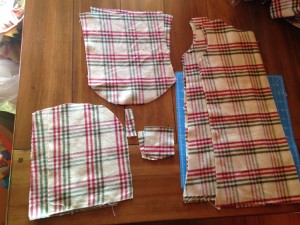
- After zigzaging or serging, sew the top part of the pocket on the main pocket
parts - If you want a button on your pocket sew them on now before you attach it
- Next, make sure you align your pockets on the dress front by measuring in from the sides and from the top and bottom to get them as even as possible.
- You can either fold your pocket edges and sew either a straight or zigzag stitch around the pocket leaving the top open, or you can just stitch around it as I have done since I liked the look for the plaid dress.
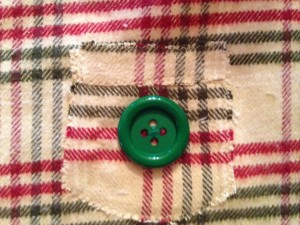
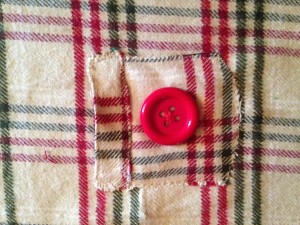
- For the hood, have the pattern facing each other on the inside and sew the rounded edge!
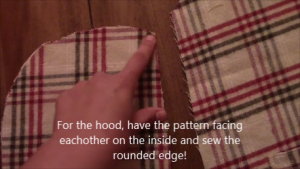
- Flip right side out and hem or add bias tape to outside
- You can sew your hood on fabric pattern facing fabric pattern and sew across and flip right side out, or you can use buttons or velco. You will need to either make button holes or put velcro on the back of the dress to hold the hood. I used iron on velco. Note**If you are sewing it on wait until after you sew the front to back**
- The front collar of the dress needs to be hemmed or sew bias tape on it
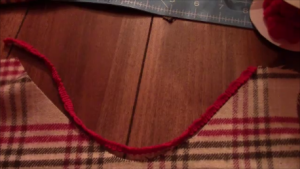
- Next, is to sew the front to back of the dress. If you want the top of the dress to be velcro as well, you can have a jumper (but you wouldn’t have sleeves so skip the sleeve part).
- To sew it together, turn patterns facing each other and sew . Also line up sides and pin and sew down underneath the sleeve opening. Then turn right side out.
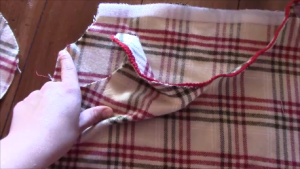
- If you are not doing sleeves, you want to hem or use bias tape on the sleeve holes after sewing down the side. If you are not doing sleeves then hem or use bias tape around the bottom and you are all done!
- If you are doing sleeves, turn pattern facing pattern and sew. Then turn right side out.
- Sew the sleeve sides together by facing pattern side to pattern inside. Do not sew the curved part as pointed to in the picture below. Then turn right side out
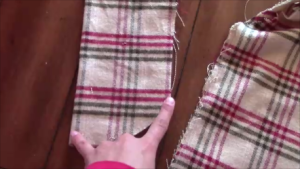
- Turn your body of the dress inside out. Have your sleeve right side out. Place your sleeve inside the body with the curved open part lining up with the
armhole. Sew around. 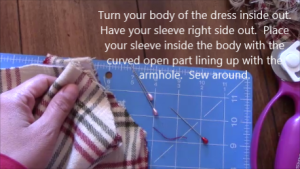
- This picture shows that you want the sleeve facing downward inside the body of the dress. the larger end to the hole and the smaller end (where the hand comes out) facing downwards.
- You can hem or use bias tape on cuffs of sleeves and bottom of dress. Then add any embellishments you want and wah-la you are done!
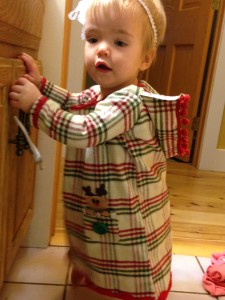
- Congrats! Feel free to post your pics below!
Share
